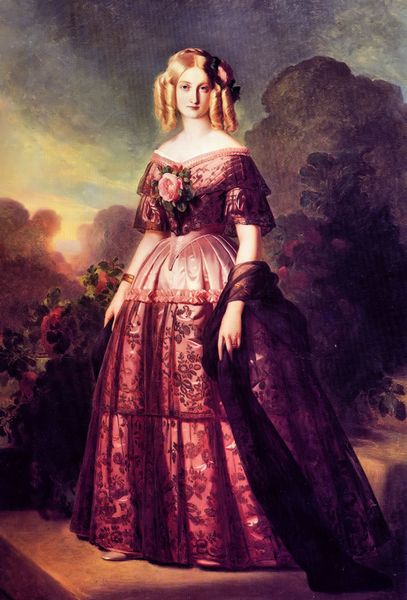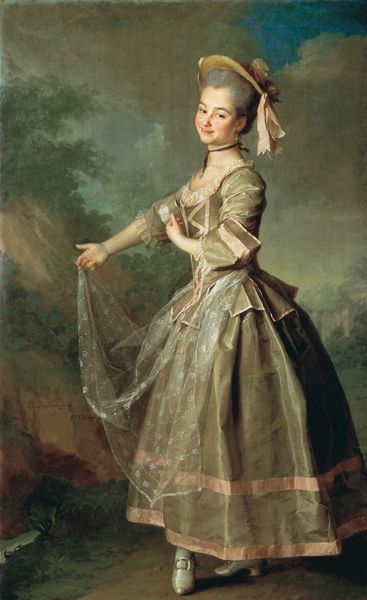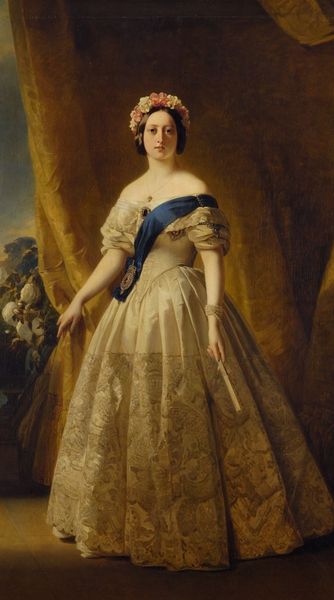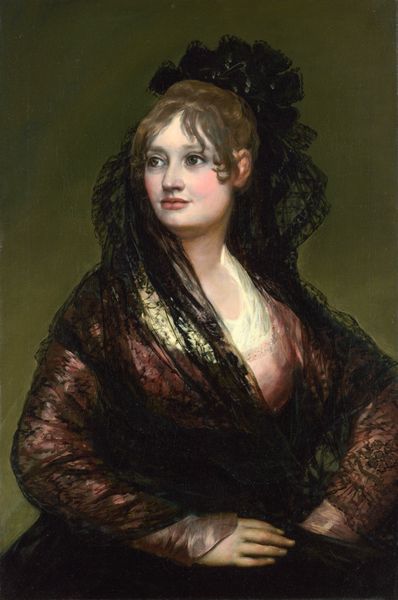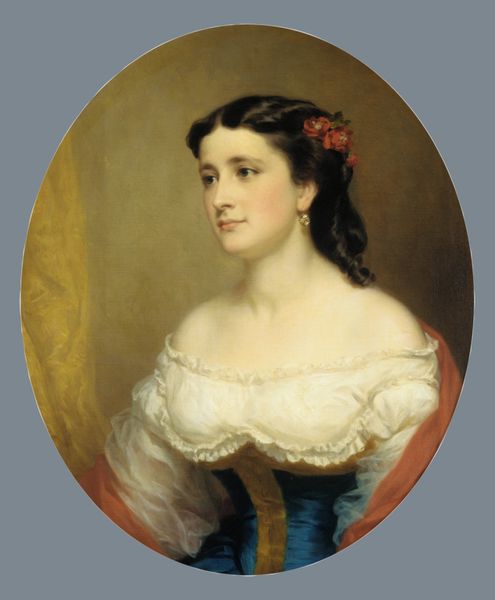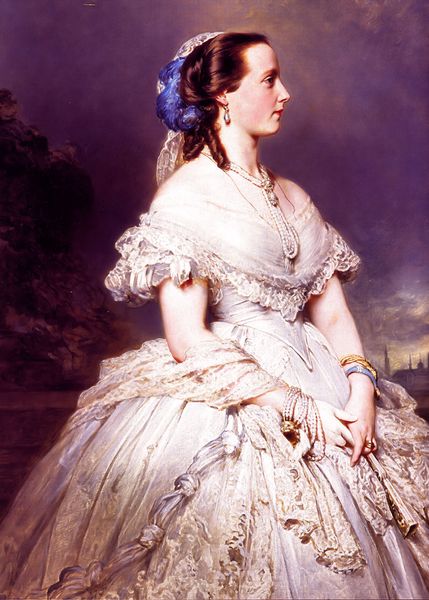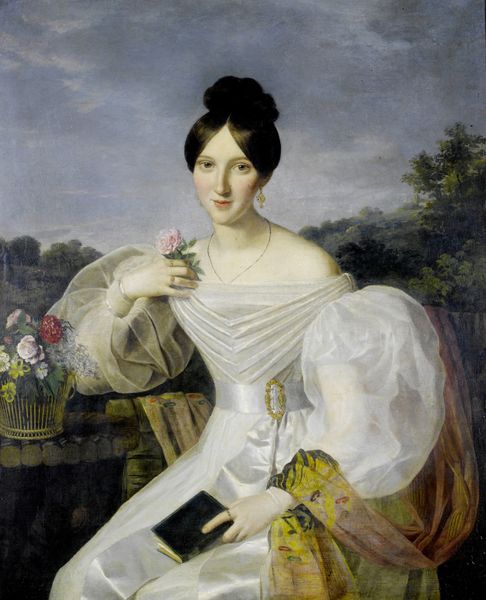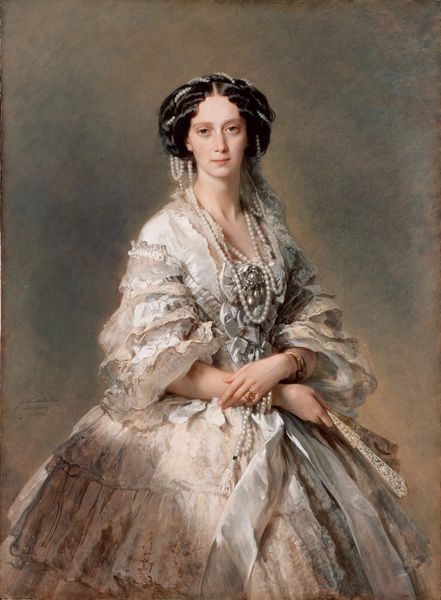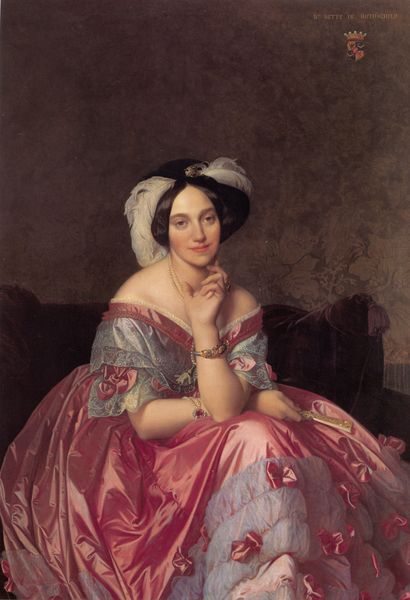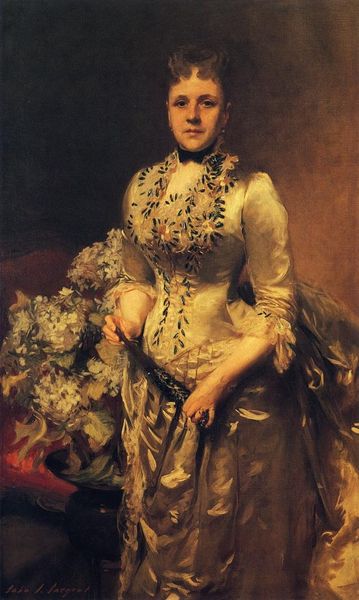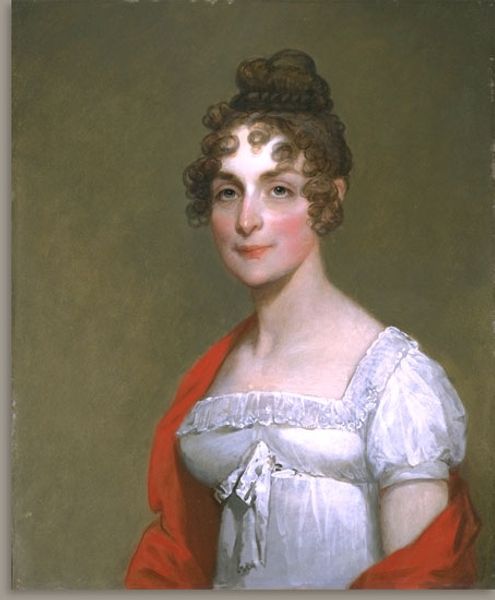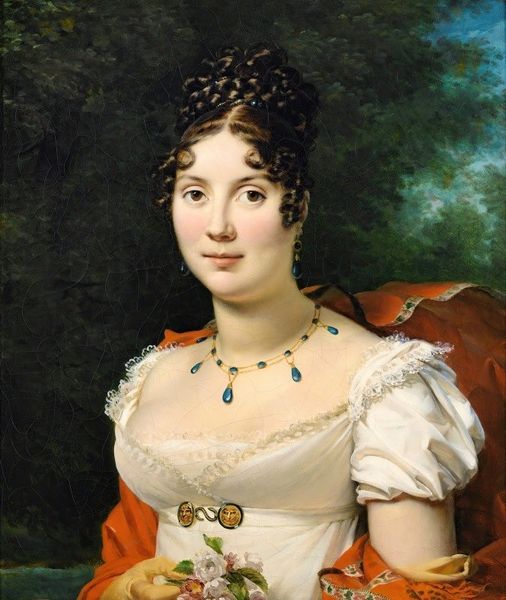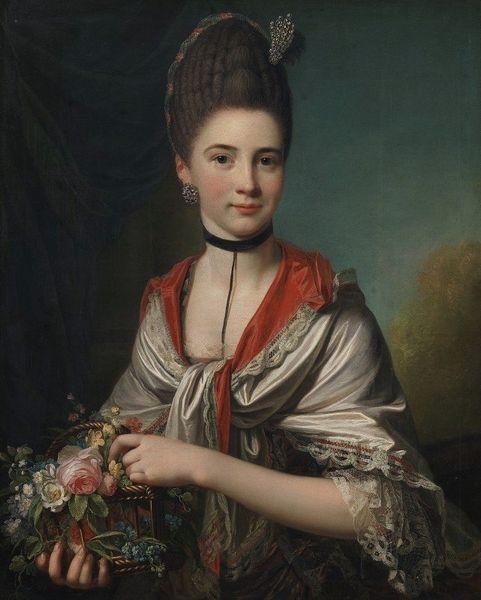
Portrait of Francisca Caroline Gonzaga de Bragança, princesse de Joinville 1850
0:00
0:00
painting, oil-paint
#
portrait
#
painting
#
oil-paint
#
romanticism
#
academic-art
Copyright: Public domain
Curator: Here we see Franz Xaver Winterhalter's oil painting, "Portrait of Francisca Caroline Gonzaga de Bragança, princesse de Joinville," created in 1850. Editor: My immediate impression is one of poised melancholy, captured in this soft, muted color palette. The princess has such a serious look. Curator: It is indeed a complex representation of female aristocracy in the mid-19th century. Winterhalter, a master of portraiture, was hugely popular among European royalty. Think about the institutional context: these portraits reinforced power structures and presented carefully curated images of wealth and status. Editor: Yes, and through a feminist lens, we might explore the societal expectations placed on women like Princess Francisca. Her identity was largely defined by her lineage and marriage prospects, limiting her agency and individual expression. This painting becomes a site where we can unravel the performance of femininity in the royal court. Curator: Her gaze, however, isn't passive. Consider how these portraits functioned politically, especially in a world steeped in dynastic ambition. Winterhalter wasn't merely capturing a likeness; he was crafting a narrative of power and legitimacy. Look closely at the fan. Such props were powerful tools that denoted status. Editor: The fan becomes symbolic then, both concealing and revealing her inner self. Think of it as a precursor to later discussions around performativity, such as those advanced by Judith Butler. It represents an interesting commentary on the ways gender is constructed through objects and gestures. How do the flowers change your reading? Curator: Interesting. Well, on a very practical level, their presence highlights the access to wealth but the naturalistic inclusion also subtly alludes to ideals of feminine beauty. The fact they are styled into her hair could almost symbolize her proximity to traditional power structures as well. It's difficult not to appreciate that her position, a very public facing role, came with many forms of silent power. Editor: Ultimately, these details of beauty are really potent starting points to analyze the performance of power through a gendered and class-conscious framework. And this painting continues to prompt me to question the expectations imposed on women and the societal narratives they perpetuate. Curator: It’s true. When viewing it through an academic framework, and also considering its creation during a time of societal transition, one recognizes the painting operates simultaneously as an homage and as a study in cultural symbolism.
Comments
No comments
Be the first to comment and join the conversation on the ultimate creative platform.
